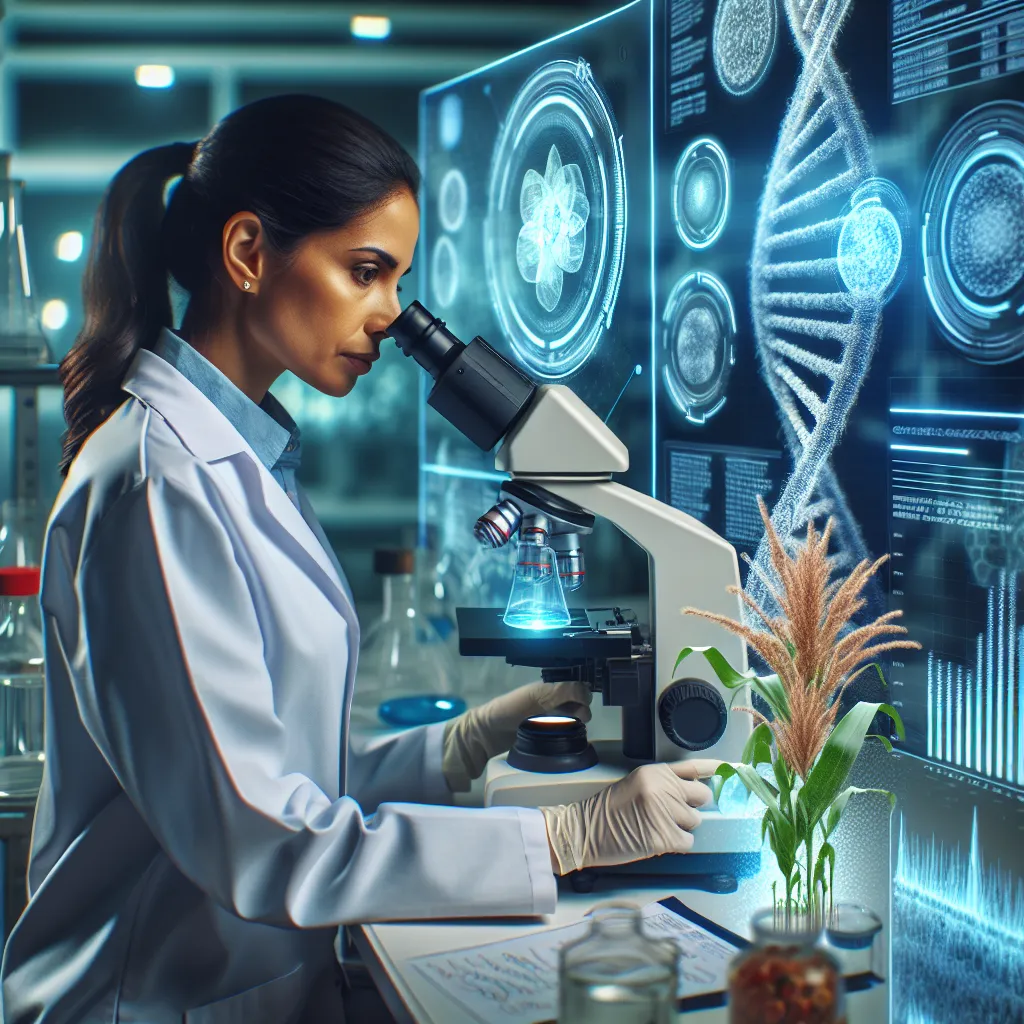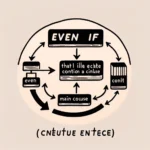Welcome to our IELTS Reading practice session focused on the fascinating topic of gene editing and its potential to address global food shortages. As an experienced IELTS instructor, I’ve crafted a comprehensive practice test that mirrors the structure and difficulty of the actual IELTS Reading exam. This practice material will help you sharpen your skills while exploring an important scientific subject.
 Gene editing in food production
Gene editing in food production
IELTS Reading Test: Gene Editing and Global Food Security
Passage 1 (Easy Text)
Gene Editing: A Revolutionary Tool in Agriculture
Gene editing is a groundbreaking technology that has the potential to revolutionize agriculture and address global food shortages. This innovative technique allows scientists to make precise changes to an organism’s DNA, enabling them to enhance desirable traits or remove unwanted characteristics in plants and animals.
One of the most promising applications of gene editing in agriculture is the development of crops that are more resistant to pests, diseases, and environmental stresses. For example, researchers have successfully created wheat varieties that are resistant to powdery mildew, a fungal disease that can devastate wheat crops. By editing specific genes responsible for the plant’s immune response, scientists have enhanced the wheat’s natural defenses against this harmful pathogen.
Another significant advantage of gene editing is its potential to improve crop yields. By modifying genes that control plant growth and development, researchers can create varieties that produce more grain or fruit per plant. This increased productivity could help farmers meet the growing demand for food in a world with an ever-increasing population.
Gene editing also offers the possibility of enhancing the nutritional content of crops. Scientists have used this technology to develop rice varieties with higher levels of beta-carotene, a precursor to vitamin A. This biofortified rice could help combat vitamin A deficiency, a serious health problem in many developing countries.
Furthermore, gene editing can contribute to sustainable agriculture by reducing the need for chemical pesticides and fertilizers. Crops that are naturally resistant to pests or more efficient at absorbing nutrients require fewer inputs, which can lead to reduced environmental impact and lower production costs for farmers.
As the global population continues to grow and climate change poses new challenges to agriculture, gene editing emerges as a powerful tool to ensure food security. By harnessing this technology responsibly and ethically, we can develop more resilient, productive, and nutritious crops that can help feed the world’s growing population while minimizing environmental impact.
Questions 1-7
Do the following statements agree with the information given in the reading passage?
Write:
TRUE if the statement agrees with the information
FALSE if the statement contradicts the information
NOT GIVEN if there is no information on this
- Gene editing allows scientists to make random changes to an organism’s DNA.
- Researchers have used gene editing to create wheat resistant to powdery mildew.
- Gene editing can be used to increase crop yields.
- All gene-edited crops require more chemical pesticides.
- Scientists have developed rice with higher levels of vitamin C using gene editing.
- Gene editing can help reduce the environmental impact of agriculture.
- The global population is expected to decrease in the coming years.
Questions 8-13
Complete the sentences below.
Choose NO MORE THAN TWO WORDS from the passage for each answer.
- Gene editing enables scientists to enhance ___ traits in plants and animals.
- By editing genes responsible for the plant’s ___, scientists have improved wheat’s resistance to powdery mildew.
- Researchers can modify genes that control plant ___ to create varieties with higher yields.
- Rice varieties with higher levels of beta-carotene are referred to as ___ rice.
- Gene-edited crops that are naturally resistant to pests may require fewer ___.
- Gene editing is seen as a powerful tool to ensure ___ in the face of global challenges.
Passage 2 (Medium Text)
Ethical Considerations and Public Perception of Gene Editing in Agriculture
While gene editing holds immense promise for addressing global food shortages, it also raises important ethical questions and concerns about public perception. As this technology continues to advance, it is crucial to consider the various perspectives and potential implications of its widespread adoption in agriculture.
One of the primary ethical considerations surrounding gene editing in agriculture is the potential for unintended consequences. Although scientists strive to make precise changes to an organism’s DNA, there is always a possibility that these modifications could have unforeseen effects on the plant or animal, as well as on the broader ecosystem. Critics argue that we may not fully understand the long-term implications of altering genetic code, and that caution should be exercised to prevent potential harm to human health or the environment.
Another significant concern is the impact of gene editing on biodiversity. Some environmentalists worry that the widespread adoption of gene-edited crops could lead to a reduction in genetic diversity within agricultural systems. This loss of biodiversity could potentially make our food supply more vulnerable to large-scale crop failures in the face of new diseases or changing environmental conditions.
The issue of intellectual property rights and corporate control over gene-edited crops is also a subject of debate. As private companies invest heavily in developing gene-edited varieties, there are concerns about the concentration of power in the hands of a few large agricultural corporations. This could potentially limit farmers’ choices and increase their dependence on proprietary seeds and associated products.
Public perception of gene editing in agriculture varies widely, with opinions often influenced by cultural, religious, and personal beliefs. Some view the technology as a natural extension of traditional breeding methods and a necessary tool to address global food security challenges. Others perceive it as an unnatural intervention in the food system and express concerns about the safety of consuming gene-edited products.
Regulatory frameworks for gene-edited crops also differ across countries, creating challenges for international trade and the global adoption of this technology. While some nations have embraced gene editing as a form of conventional breeding, others regulate it more strictly, treating gene-edited organisms similarly to genetically modified organisms (GMOs).
To address these concerns and foster public trust, transparency and open dialogue are essential. Scientists, policymakers, and industry leaders must engage with the public to explain the benefits and potential risks of gene editing in agriculture. Robust safety assessments and long-term monitoring of gene-edited crops are crucial to ensure their safety and effectiveness.
Education plays a vital role in shaping public perception of gene editing. By providing accurate, accessible information about the technology and its applications, we can empower consumers to make informed decisions about gene-edited products. This education should also extend to farmers, who need to understand the benefits and potential drawbacks of adopting gene-edited crops.
As we continue to explore the potential of gene editing to address global food shortages, it is crucial to balance the promise of innovation with careful consideration of ethical implications and public concerns. By fostering an open, inclusive dialogue and prioritizing responsible development and regulation, we can work towards harnessing the benefits of gene editing while addressing legitimate concerns and ensuring the technology serves the broader public interest.
Questions 14-19
Choose the correct letter, A, B, C, or D.
-
What is one of the main ethical concerns about gene editing in agriculture?
A. The high cost of implementing the technology
B. The potential for unintended consequences
C. The difficulty of editing plant DNA
D. The lack of scientific interest in the field -
According to the passage, what might be a potential negative impact of widespread adoption of gene-edited crops?
A. Increased crop yields
B. Improved nutritional content of food
C. Reduction in genetic diversity
D. Higher resistance to pests -
What issue is raised regarding intellectual property rights and gene-edited crops?
A. The potential for increased farmer independence
B. The possibility of corporate control over the food supply
C. The likelihood of lower food prices
D. The ease of developing new crop varieties -
How does the passage describe public perception of gene editing in agriculture?
A. Uniformly positive
B. Consistently negative
C. Varying widely based on different factors
D. Mostly indifferent -
What challenge is mentioned regarding the regulation of gene-edited crops?
A. Lack of scientific understanding
B. Insufficient funding for research
C. Differences in regulatory frameworks across countries
D. Overregulation in all nations -
According to the passage, what is crucial for fostering public trust in gene editing technology?
A. Restricting access to information
B. Limiting public engagement
C. Focusing solely on the benefits
D. Transparency and open dialogue
Questions 20-26
Complete the summary below.
Choose NO MORE THAN TWO WORDS from the passage for each answer.
Gene editing in agriculture presents both opportunities and challenges. While it offers potential solutions to global food shortages, it also raises ethical concerns. One major issue is the possibility of (20) resulting from genetic modifications. Some environmentalists worry about the potential (21) within agricultural systems due to widespread adoption of gene-edited crops.
The question of (22) over gene-edited crops is also debated, with concerns about the concentration of power among large corporations. Public opinion on gene editing varies, influenced by factors such as (23) and personal beliefs. Regulatory approaches differ internationally, creating challenges for (24) ___ and global adoption.
To address these issues, (25) and open communication are crucial. Scientists and policymakers must engage with the public, and (26) are necessary to ensure the safety of gene-edited crops. Education is also vital in shaping public perception and empowering consumers to make informed decisions.
Passage 3 (Hard Text)
The Intersection of Gene Editing, Climate Change, and Global Food Security
The convergence of gene editing technology, climate change, and global food security presents a complex and multifaceted challenge for the 21st century. As the world grapples with the impacts of a changing climate on agricultural systems, gene editing emerges as a potential tool to develop resilient crops and livestock that can withstand extreme weather conditions, pests, and diseases exacerbated by global warming.
Climate change poses significant threats to agriculture through various mechanisms, including rising temperatures, altered precipitation patterns, and increased frequency of extreme weather events. These changes can lead to reduced crop yields, shifts in suitable growing regions, and the emergence of new pests and diseases. Traditional breeding methods, while valuable, may not be able to keep pace with the rapidly changing environmental conditions. This is where gene editing offers a promising avenue for rapid adaptation.
One of the key applications of gene editing in the context of climate change is the development of drought-tolerant crops. By modifying genes involved in water use efficiency and stress response, scientists aim to create varieties that can maintain productivity under water-limited conditions. For instance, researchers have used CRISPR-Cas9 technology to edit the ARGOS8 gene in maize, resulting in improved yield stability under drought stress. This approach could be particularly valuable in regions experiencing increasing aridity due to climate change.
Similarly, gene editing can be employed to enhance crops’ tolerance to heat stress, which is becoming increasingly problematic as global temperatures rise. By targeting genes involved in heat shock response and cellular protection mechanisms, scientists can potentially develop varieties that maintain yield and quality under higher temperature regimes. This could be crucial for preserving agricultural productivity in tropical and subtropical regions that are particularly vulnerable to climate change impacts.
The potential of gene editing extends beyond abiotic stress tolerance to addressing biotic stresses as well. Climate change is altering the distribution and severity of plant pests and diseases, posing new challenges to food security. Gene editing offers the possibility of rapidly developing crop varieties with enhanced resistance to emerging pathogens. For example, researchers have used CRISPR technology to create wheat varieties resistant to powdery mildew by modifying genes that the fungus requires for infection.
Moreover, gene editing could contribute to mitigating agriculture’s impact on climate change. By developing crops with improved nitrogen use efficiency, scientists aim to reduce the need for synthetic fertilizers, which are a significant source of greenhouse gas emissions. Additionally, gene editing could be used to enhance the carbon sequestration potential of crops, potentially turning agricultural lands into more effective carbon sinks.
The application of gene editing in livestock breeding also holds promise for addressing climate change-related challenges. Scientists are exploring ways to reduce methane emissions from ruminants, a significant contributor to agricultural greenhouse gas emissions, through genetic modifications. Furthermore, gene editing could be used to develop livestock breeds that are more tolerant to heat stress and resistant to emerging diseases associated with changing climatic conditions.
While the potential of gene editing in addressing climate change and food security is significant, it is crucial to consider the technology within a broader context of sustainable agricultural practices. Agroecological approaches, conservation of genetic diversity, and traditional knowledge systems should be integrated with gene editing strategies to create resilient and sustainable food systems.
The global nature of climate change and food security challenges necessitates international collaboration in gene editing research and development. Sharing of genetic resources, technologies, and knowledge across borders will be crucial for developing locally adapted solutions. However, this raises questions about equitable access to gene editing technologies and the fair distribution of benefits derived from them.
As we navigate the complex interplay between gene editing, climate change, and global food security, it is imperative to adopt a holistic, interdisciplinary approach. This should involve not only scientists and agricultural experts but also policymakers, ethicists, and representatives from diverse stakeholder groups. By fostering inclusive dialogue and responsible innovation, we can harness the potential of gene editing to enhance food security and resilience in the face of climate change while addressing ethical concerns and ensuring equitable outcomes.
Questions 27-32
Choose the correct letter, A, B, C, or D.
-
According to the passage, why is gene editing seen as a promising tool in the context of climate change and agriculture?
A. It can completely stop climate change
B. It allows for more rapid adaptation than traditional breeding methods
C. It eliminates the need for pesticides
D. It guarantees higher crop yields in all conditions -
What is mentioned as a key application of gene editing in crops facing climate change?
A. Increasing crop size
B. Enhancing flavor profiles
C. Developing drought-tolerant varieties
D. Extending shelf life of produce -
How does the passage suggest gene editing could help mitigate agriculture’s impact on climate change?
A. By increasing the use of synthetic fertilizers
B. Through developing crops with improved nitrogen use efficiency
C. By promoting monoculture farming
D. Through increasing water consumption in agriculture -
What potential application of gene editing in livestock is mentioned in the passage?
A. Increasing meat production
B. Enhancing milk quality
C. Reducing methane emissions from ruminants
D. Improving animal intelligence -
According to the passage, what approach should be taken when considering gene editing for climate change and food security challenges?
A. Focusing solely on gene editing technologies
B. Ignoring traditional agricultural practices
C. Adopting a holistic, interdisciplinary approach
D. Limiting research to developed countries -
What does the passage suggest about the global nature of climate change and food security challenges?
A. They can be solved by individual countries acting alone
B. They require international collaboration in research and development
C. They are not as serious as previously thought
D. They can be addressed solely through economic policies
Questions 33-40
Complete the summary below.
Choose NO MORE THAN THREE WORDS from the passage for each answer.
Gene editing technology offers potential solutions to challenges posed by climate change and global food security. It can be used to develop crops that are resistant to (33) conditions, pests, and diseases. For example, scientists have modified the (34) gene in maize to improve yield stability under drought stress.
Gene editing can also be applied to enhance crops’ tolerance to (35) , which is becoming more problematic due to rising global temperatures. Additionally, the technology can be used to develop crop varieties with enhanced resistance to (36) that may emerge due to climate change.
In livestock breeding, gene editing could be used to reduce (37) from ruminants and develop breeds more tolerant to heat stress. However, it’s important to consider gene editing within a broader context of (38) practices.
The global nature of these challenges necessitates (39) in research and development. As we move forward, it’s crucial to adopt a(n) (40) approach, involving diverse stakeholders to ensure responsible innovation and equitable outcomes.
Answer Key
Passage 1:
- FALSE
- TRUE
- TRUE
- FALSE
- NOT GIVEN
- TRUE
- NOT GIVEN
- desirable
- immune response
- growth and development
- biofortified
- inputs
- food security
Passage 2:
- B
- C
- B
- C
- C
- D
- unintended consequences
- loss of biodiversity
- intellectual property rights
- cultural
- international trade
- transparency
- robust safety assessments
Passage 3:
- B
- C
- B
- C
- C
- B
- extreme weather
- ARGOS8
- heat stress
- emerging pathogens
- methane emissions
- sustainable agricultural
- international collaboration
- holistic, interdisciplinary
This IELTS Reading practice test covers various aspects of gene editing and its potential to address global food shortages in the context of climate change. It provides a comprehensive overview of the topic while testing your reading comprehension skills across different difficulty levels.
To improve your performance in the IELTS Reading test, focus on:
- Time management: Practice completing each passage and its questions within 20 minutes.
- Sk


